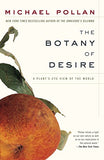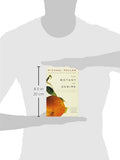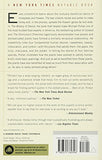The Botany of Desire: A Plant's-Eye View of the World
Author: Pollan, Michael
Number Of Pages: 271
Details: Product Description The book that helped make Michael Pollan, the New York Times bestselling author of How to Change Your Mind, Cooked and The Omnivore’s Dilemma, one of the most trusted food experts in America Every schoolchild learns about the mutually beneficial dance of honeybees and flowers: The bee collects nectar and pollen to make honey and, in the process, spreads the flowers’ genes far and wide. In The Botany of Desire, Michael Pollan ingeniously demonstrates how people and domesticated plants have formed a similarly reciprocal relationship. He masterfully links four fundamental human desires—sweetness, beauty, intoxication, and control—with the plants that satisfy them: the apple, the tulip, marijuana, and the potato. In telling the stories of four familiar species, Pollan illustrates how the plants have evolved to satisfy humankind’s most basic yearnings. And just as we’ve benefited from these plants, we have also done well by them. So who is really domesticating whom? From The New Yorker Apples, tulips, marijuana, and potatoes. This sounds, perhaps, like a Dutch shopping list, but it's really a quick index to the subjects of Pollan's new book. One day, while working in his garden, the author began to wonder how his role as a sower of seeds differed from that of the bumblebee that was pollinating a nearby apple tree; his musings inspired these tales of botanical transformation. Pollan explores the ways in which four common crops have enjoyed and suffered the very best and worst of human intentions: how apples spread westward with American settlers, how the stock of tulips has soared and crashed, how the potency of marijuana has been exalted even as the plants have been miniaturized, and how potatoes have been turned into a cog in the genetic-industrial complex. The result is a wry, informed pastoral. Copyright © 2005 The New Yorker Review “Pollan shines a light on our own nature as well as on our implication in the natural world.” —The New York Times “[Pollan] has a wide-ranging intellect, an eager grasp of evolutionary biology and a subversive streak that helps him to root out some wonderfully counterintuitive points. His prose both shimmers and snaps, and he has a knack for finding perfect quotes in the oddest places.... Best of all, Pollan really loves plants.” —The New York Times Book Review “A wry, informed pastoral.” —The New Yorker “We can give no higher praise to the work of this superb science writer/ reporter than to say that his new book is as exciting as any you’ll read.” —Entertainment Weekly “A whimsical, literary romp through man’s perpetually frustrating and always unpredictable relationship with nature.” —Los Angeles Times From the Inside Flap Every schoolchild learns about the mutually beneficial dance of honeybees and flowers: The bee collects nectar and pollen to make honey and, in the process, spreads the flowers' genes far and wide. In The Botany of Desire, Michael Pollan ingeniously demonstrates how people and domesticated plants have formed a similarly reciprocal relationship. He masterfully links four fundamental human desires—sweetness, beauty, intoxication, and control—with the plants that satisfy them: the apple, the tulip, marijuana, and the potato. In telling the stories of four familiar species, Pollan illustrates how the plants have evolved to satisfy humankind's most basic yearnings. And just as we've benefited from these plants, we have also done well by them. So who is really domesticating whom? From the Back Cover Every schoolchild learns about the mutually beneficial dance of honeybees and flowers: The bee collects nectar and pollen to make honey and, in the process, spreads the flowers' genes far and wide. In The Botany of Desire, Michael Pollan ingeniously demonstrates how people and domesticated plants have formed a similarly reciprocal relationship. He masterfully links four fundamental human desires--sweetness, beauty, intoxication, and control--w
Release Date: 28-05-2002
Package Dimensions: 7.9 x 5.1 x 0.7 inches
Languages: English








